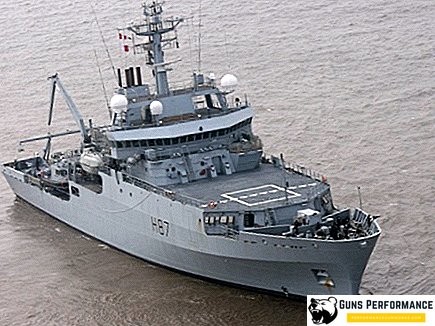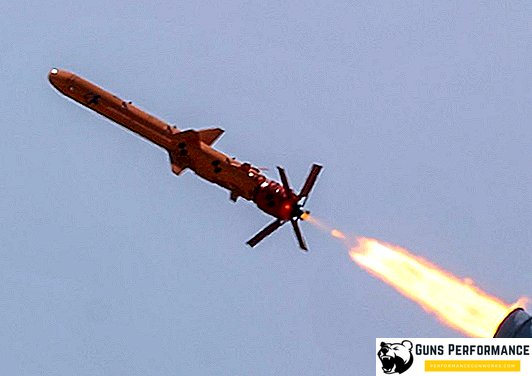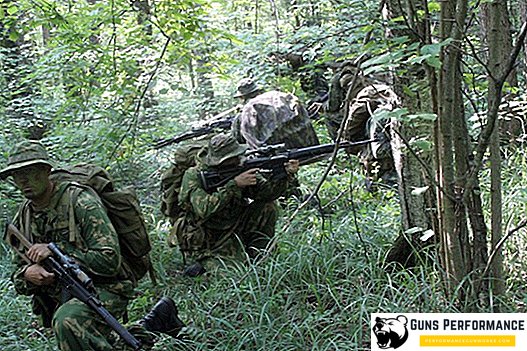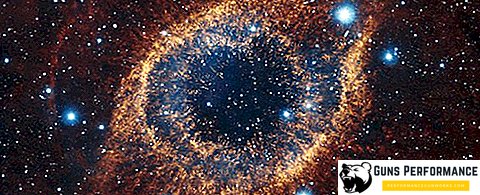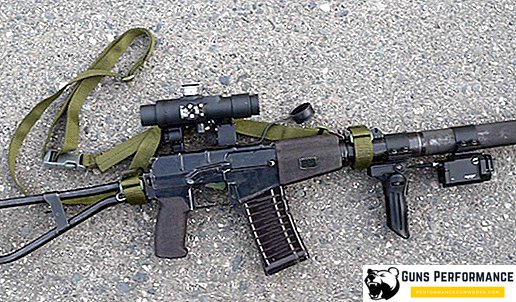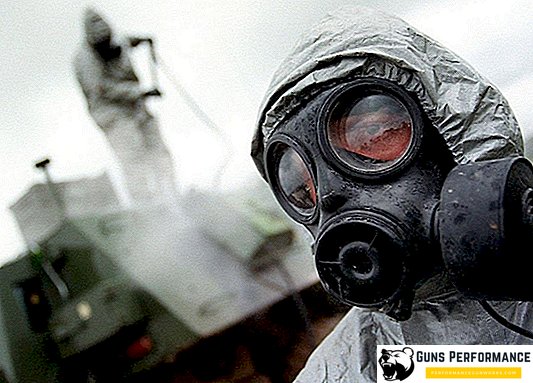
On April 22, 1915, a strange yellowish-green cloud moved from the German positions to the trenches in which the French-British troops were stationed. After a few minutes, it reached the trenches, filling every hole, any depression, flooding the funnels and trenches. The incomprehensible greenish fog first caused the soldiers surprise, then fear, but when the first clouds of smoke enveloped the area and made people gasp, the troops were filled with real horror. Those who could still move, fled, trying in vain to escape from the suffocating death, which inexorably pursued them.
It was the first massive use of chemical weapons in the history of mankind. On that day, the Germans sent 168 tons of chlorine from 150 gas bottles to the Allied positions. After that, the German soldiers without a loss took up positions in a panic left by the Allied forces.
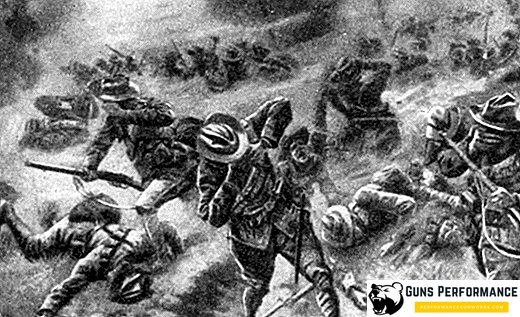
The use of chemical weapons caused a real storm of indignation in society. And although, by that time, the war had turned into a bloody and senseless slaughter, there was something extremely cruel in harassing people with gas — like rats or cockroaches.
World War I was the only major military conflict in which poison gases were used on a large scale. In World War II, neither the Nazis nor the leadership of the anti-Hitler coalition dared to unleash a new chemical war. However, all subsequent decades, the military constantly prepared for it: chemists invented new types of toxic substances, developed more effective means for their delivery. At the international level, several conventions have been adopted that expressly prohibit the development, storage and use of chemical warfare agents. But despite this, by the end of the Cold War, the USSR and the USA had huge arsenals of chemical weapons.
In subsequent years, such samples of chemical weapons were created, compared to which the chlorine and mustard gas of the First World War seemed not so dangerous. Currently, the most deadly chemical weapons are nerve gases.
To clearly describe the toxicity of nerve gases can be given one example. If you open a regular laboratory test tube with soman for a few seconds, hold your breath and you will die. You will kill the gas that entered the body through the skin.
What is this type of chemical weapon? How does it work, what are its characteristics? What is the danger of these toxic substances?
Nerve gases: history of creation
The official date of appearance of chemical weapons is April 15, 1915 - the day of the memorable German gas attack on the French. However, attempts to use gases to destroy the enemy were made long before this date. They are described in the ancient Chinese annals, the use of gases during the Peloponnesian War was reported by ancient Greek historians, who repeatedly tried to use poisonous substances in the Middle Ages. However, the low level of technological development (above all, of course, chemistry) did not allow the manufacture of truly effective chemical weapons.
The situation has changed dramatically at the end of the XIX century. The rapid development of the chemical industry allowed to begin work on the creation of chemical warfare agents. They started in several countries at once: in the UK, Russia and Germany. The Teutons managed to achieve the most impressive results, which was brilliantly proved by them during the First World War.
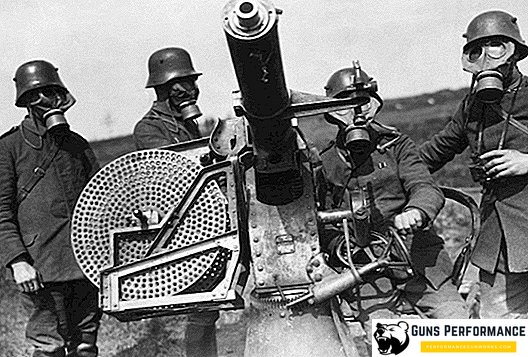
Toxic agents that were used in the course of this conflict are now referred to as first-generation chemical weapons. Here are their main groups:
- General toxic action agent (hydrocyanic acid);
- OB blistering action (mustard gas, lewisite);
- Choking agent (phosgene, diphosgene);
- Irritant agents (eg chloropicrin).
During the WWI, about 1 million people suffered from the action of chemical weapons, hundreds of thousands of people died.
After the end of the WWI, work on the improvement of chemical weapons continued, and the deadly arsenals continued to grow. The military had virtually no doubt that the next war would also be chemical.
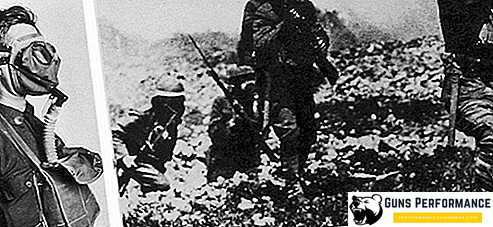
In the 1930s, work began in several countries on the development of chemical weapons based on organophosphorous substances. In Germany, a group of scientists worked on the creation of new types of pesticides, led by Dr. Schrader. In 1936, he was able to synthesize a new organophosphate insecticide, which had the highest efficiency. The substance is called herd. However, it soon became clear that it is perfect not only for the destruction of insect pests, but also for mass harassment of people. Subsequent developments have already gone under the patronage of the military.
In 1938, an even more toxic substance was obtained - methyl fluorophosphonic acid isopropyl ether. It was named after the first letters of the names of the scientists who synthesized it - sarin. This gas was ten times more deadly herd. Soman, a pinacol methyl ester of methyl fluorophosphonic acid, became even more toxic and persistent; it was obtained several years later. The last substance from this series - cyclosarin - was synthesized in 1944 and is considered the most dangerous of them. Zarin, soman, V-gases are considered to be second-generation chemical weapons.
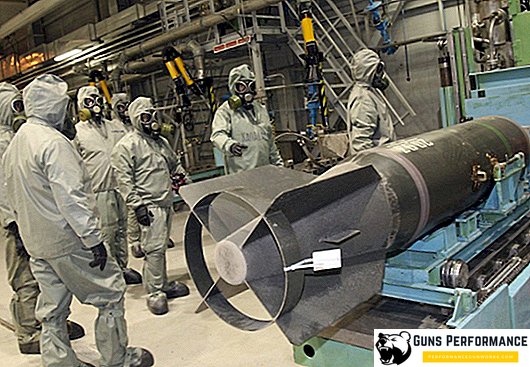
After the war, work on the improvement of nerve gases was continued. In the 1950s, V-gases were synthesized for the first time, which are several times more toxic than sarin, soman, and tabun. For the first time, V-gases (also called VX-gases) were synthesized in Sweden, but very soon Soviet chemists managed to obtain them.
In the 1960s and 1970s, the development of third-generation chemical weapons began. This group includes toxic substances with an unforeseen mechanism of damage and toxicity, even more exceeding the nerve gases. In addition, in the postwar years, much attention was paid to improving the means of delivery of agents. During this period, the development of binary chemical weapons began in the Soviet Union and the United States. This is a kind of poisonous substances, the use of which is possible only after mixing two relatively harmless components (precursors). The development of binary gases greatly simplifies the production of chemical weapons and makes it virtually impossible for international control over their proliferation.
Since the first use of combat gases, there has been constant work on improving the means of protection against chemical weapons. And in this area significant results have been achieved. Therefore, at present, the use of toxic substances against regular troops will not be as effective as during the First World War. It is quite another matter if chemical weapons are used against the civilian population, in this case the results are truly frightening. Bolsheviks liked to carry out similar attacks during the Civil War, in the mid-thirties the Italians used combat gases in Ethiopia, in the late 1980s the Iraqi dictator Saddam Hussein poisoned the nerve-paralytic gases of the rebel Kurds, fanatics from the Aum Senrikö sect sprayed sarin into the Tokyo metro station.
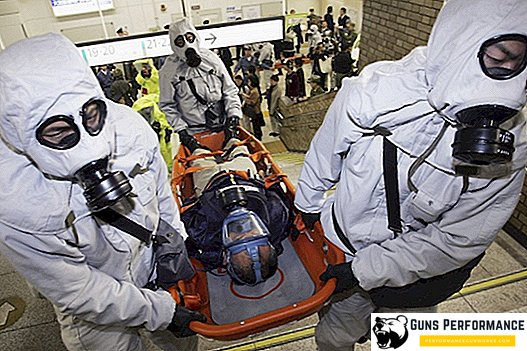
The latest cases of the use of chemical weapons are related to the civil conflict in Syria. Since 2011, government forces and the opposition have constantly accused each other of using poisonous substances. On April 4, 2018, as a result of a chemical attack on the village of Khan-Sheikhun, in northwestern Syria, about a hundred people died, almost six hundred were poisoned. Experts said the nerve gas sarin was used to attack and blamed government forces for it. Photos of Syrian gas-poisoned children spread across the world's media.
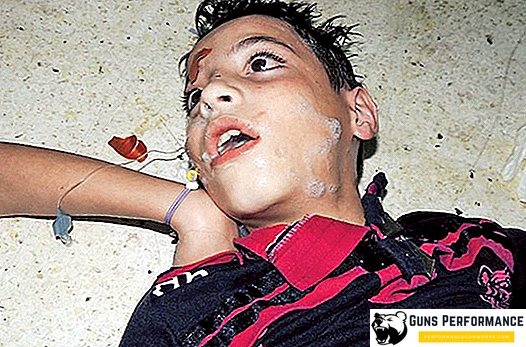
Description
Despite the fact that sarin, soman, herd and toxic substances of the VX series, are called gases, but in their normal state of aggregation they are liquids. They are heavier than water, dissolve well in lipids and organic solvents. The boiling point of sarin is 150 °, and for VX gases it is about 300 °. The higher the boiling point, the higher the resistance of the poisonous substance.
All nerve gases are compounds of phosphoric and alkylphosphonic acid. The physiological effect of this type of OM is based on blocking the transmission of nerve impulses between neurons. There is a violation of the enzyme cholinesterase, which plays a crucial role in the functioning of our nervous system.
A feature of this group of agents is extreme toxicity, resistance, difficulty in determining the presence of a toxic substance in the air and establishing its exact type. In addition, a whole range of collective and individual protection measures is necessary to protect against nerve gases.
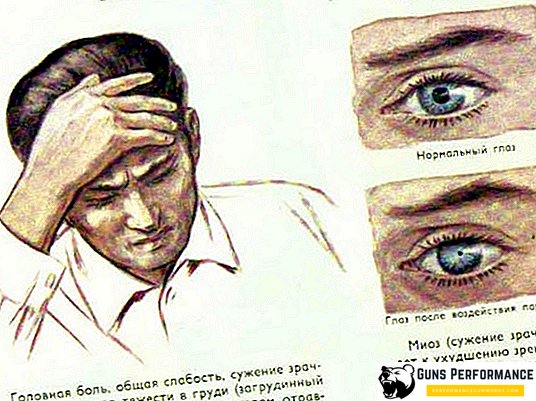
The first signs of nerve gas poisoning are a narrowing of the pupil (miosis), difficulty in breathing, emotional lability: a person has a feeling of fear, irritability, and disturbances in the normal perception of the environment.
There are three degrees of damage by nerve gases, they are similar for all members of this group of agents:
- Mild degree With a mild degree of poisoning, the patient has shortness of breath, chest pain, impaired perception and behavior. Possible visual impairment. A typical symptom of nerve agents is a sharp constriction of the pupils.
- Medium degree. There are the same symptoms as in the mild stage, but they are much more pronounced. Victims begin to choke (looks like an attack of bronchial asthma), the eyes hurt and the eyes are watering, there is increased salivation, the heart is disturbed, blood pressure rises. Mortality in case of moderate poisoning reaches 50%.
- Heavy degree. In severe poisoning, pathological processes develop rapidly. The victims begin breathing problems, convulsions, involuntary urination and defecation occur, fluid begins to flow from the nose and mouth. Death occurs as a result of paralysis of the respiratory muscles or damage to the respiratory center in the brainstem.
It should be noted that first aid and follow-up treatment is effective only for mild to moderate degrees of gas injury. In case of severe injury, the victim cannot be helped.

Sarin. It is a colorless liquid that evaporates easily at normal temperature and is practically odorless. This property is characteristic of all agents of this group and makes the nerve gases extremely dangerous: their presence can be detected only with the help of special devices or after the appearance of characteristic symptoms of poisoning. However, in this case, it is often too late to assist the victims.
In its basic (combat) form, sarin is a fine aerosol that causes poisoning in any way it enters the body: through the skin, respiratory organs, or the digestive system. Damage to the gas through the respiratory organs occurs faster and in a more severe form.
The first signs of poisoning are already detected when the concentration of OM in the air is 0.0005 mg / l. Sarin is an unstable toxic substance. In the summer of its resistance is several hours. Sarin reacts rather poorly with water, but it reacts well with solutions of alkalis or ammonia. Usually they are used for degassing the area.
Herd. Colorless liquid, odorless, practically insoluble in water, but soluble in alcohols, ethers and other organic solvents. It is applied in the form of a fine aerosol. Herd boils at a temperature of 240 °, freezes - -50 ° C.
The lethal concentration in the air is 0.4 mg / l; if it comes into contact with the skin, it is 50-70 mg / kg. Degassing products are toxic for this agent, as they contain hydrocyanic compounds.

Soman. This poisonous substance is a colorless liquid with a faint smell of mown hay. By its physical characteristics is very similar to sarin, but it is much more toxic than him. Mild poisoning is observed already at a concentration of 0.0005 mg / l of the substance in the air, the content of 0.03 mg / l can kill a person within one minute. It affects the body through the skin, respiratory organs and the digestive system. Alkali-ammonia solutions are used to decontaminate contaminated objects and the territory.
VX (VX-gas, VX-agent). This group of chemicals is one of the most toxic on the planet. VX gas is 300 times more toxic than phosgene. It was developed in the early 50s by Swedish scientists who worked on the creation of new pesticides. Then the patent was bought by the Americans.
It is an amber, oily liquid that is odorless. It boils at a temperature of 300 ° С, practically does not dissolve in water, but reacts well with organic solvents. The combat status of this agent is a fine aerosol. It affects humans through the respiratory system, skin and digestive system. The concentration of 0.001 mg / l of gas in the air kills a person in 10 minutes, with a content of 0.01 mg / l, death occurs in a minute.
VX gas is notable for its considerable resistance: in the summer up to 15 days, in the winter several months, practically before the onset of heat. This substance infects water bodies for a long period - up to six months. Military equipment that has come under the influence of VX gas lasts for several more days (up to three in the summer), which is dangerous for humans. Symptoms of poisoning are similar to other substances of this group of agents.
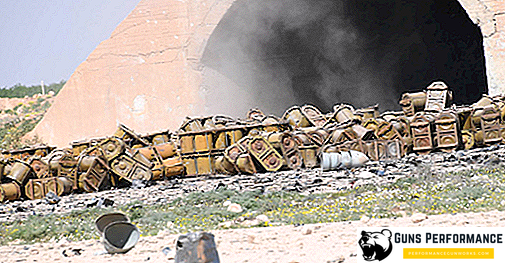
Delivery Methods
The main means of delivering chemical weapons - including paralytic gases - are artillery, aircraft, and missile weapons. Particularly convenient as a means of delivery of OB jet multiple launch rocket systems (MLRS). The Soviet "Katyusha" BM-13 was originally designed for firing ammunition with combat gases.
In the United States, they planned to use M55 rocket unguided rocket missiles to deliver nerve gases. For ammunition, there were calculations to create the average lethal concentration of gases in a certain area. You can add that all types of Soviet MLRS can also fire chemical ammunition.
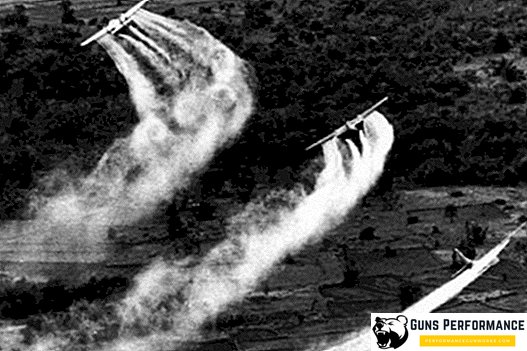
An even more effective means of delivering nerve agents is aviation. Its use allows you to cover a much larger area with a poisonous substance. For direct delivery, aviation ammunition (usually bombs) or special pouring containers can be used. According to the estimates of the Americans, a B-52 squadron of bomber can infect an area of 17 square meters. km
As a means of delivering agents, various missile systems can be used, usually short-range and medium-range tactical missiles. In the USSR, chemical warheads could be installed on the PIRS "Luna", "Elbrus", "Temp".
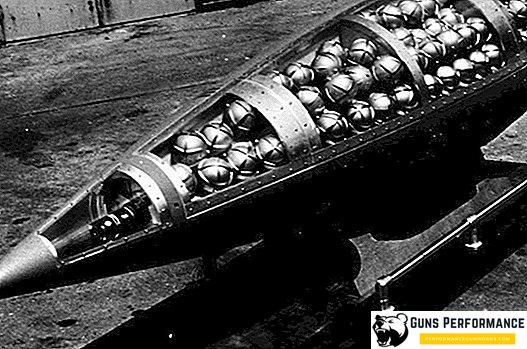
It should be noted that the degree of damage to enemy personnel is very dependent on the training and security of military personnel. For this reason, it can range from 5 to 70% of fatal cases.



